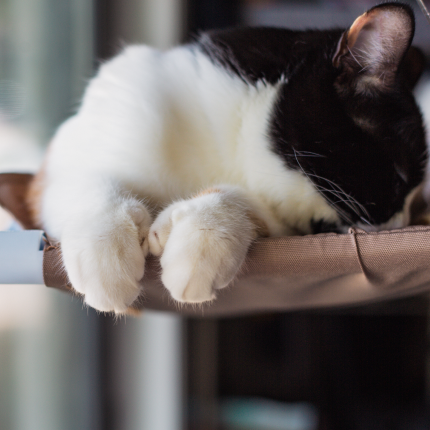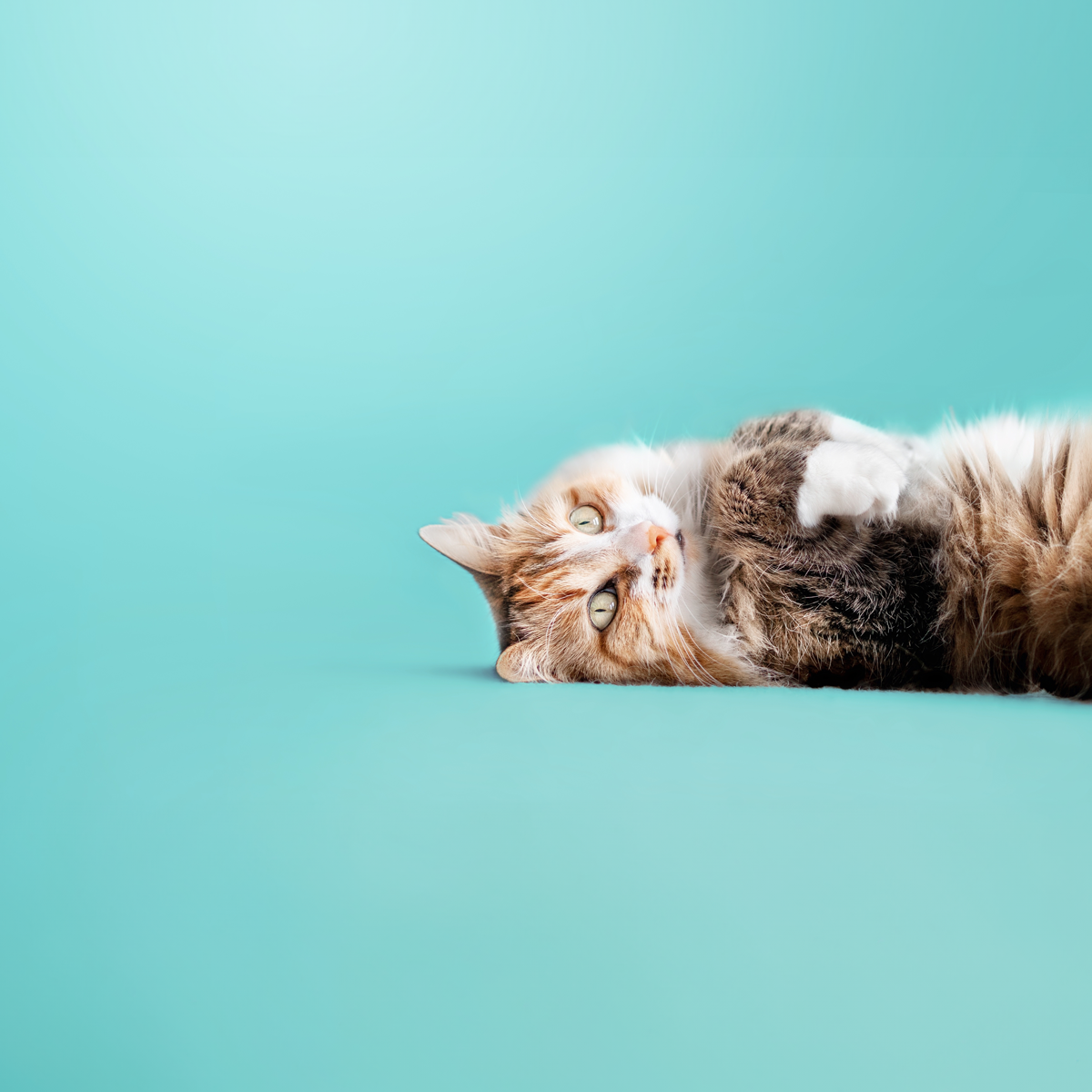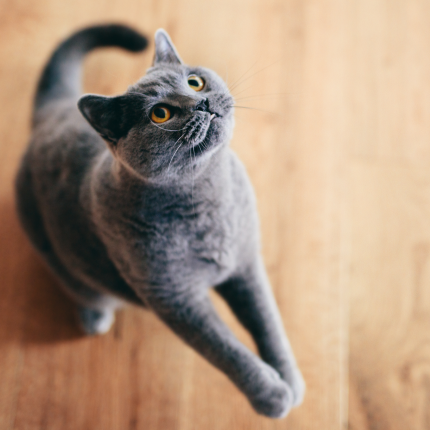New Research Shows Cats Can Develop Dementia

Many cat owners have noticed it: as their feline companions grow older, they start to change. A once-confident cat may begin to meow through the night, seem disoriented in familiar surroundings, or forget long-established routines. These behaviors may not just be “old age”; they can be signs of feline cognitive dysfunction syndrome (CDS), often called feline dementia.
Now, scientists have confirmed that dementia in cats shares striking similarities with Alzheimer’s disease in humans, right down to the same toxic protein buildup in the brain and the way brain cells break down. This discovery is more than just fascinating; it could help improve the lives of aging pets and advance human dementia research.
advertisement
What the Study Found
In a recent study published in the European Journal of Neuroscience, researchers examined the brains of older cats, some healthy, some showing signs of cognitive decline, after they had passed away. These cats had been diagnosed during life with symptoms very similar to those seen in people with dementia: increased vocalization (especially at night), confusion, changes in social behavior, disrupted sleep, disorientation, house soiling, and anxiety.
When the researchers examined the cats’ brains under the microscope, they found:
- A buildup of amyloid-beta, a toxic protein that is a defining feature of Alzheimer’s disease in humans.
- Brain cell connections (synapses) filled with amyloid-beta, especially in older cats and those with dementia.
- Inflammation in the brain, caused by overactive support cells called microglia and astrocytes.
- Increased “synaptic pruning”, a process where these support cells started engulfing and removing synapses, the connections between brain cells.
This last finding is especially important. In healthy brains, synaptic pruning is a normal part of development. But in dementia, this process becomes overactive, and the brain starts losing too many synapses. Since synapses are crucial for learning, memory, and normal thinking, their loss is a major driver of cognitive decline. The study showed that aging cats with amyloid-beta buildup experienced this same destructive process.
A Natural Model for Alzheimer’s
Why does this matter so much?
Most of what we know about Alzheimer’s disease comes from studies in mice that are genetically engineered to develop certain aspects of the disease. But mice don’t naturally get dementia; cats do.
This means older cats with CDS may be a more natural and accurate model for Alzheimer’s disease in humans. They develop the disease spontaneously as they age, they show similar behavioral changes, and their brains display the same toxic protein buildup and inflammation found in human patients.
Because of this, researchers believe studying feline dementia could:
- Help clarify how amyloid-beta actually damages the brain
- Reveal why some aging brains cope better than others
- Point toward new treatments that could help both cats and people
The study also found that in cats with dementia, but not just normally aging cats, there was a stronger link between amyloid buildup and synapse loss caused by glial cells (the brain’s support cells). This suggests that in feline dementia, just like in human Alzheimer’s, the combination of amyloid and an overactive immune response in the brain may be what ultimately causes cognitive decline.
What This Means for Cat Owners
Feline cognitive dysfunction syndrome is likely underdiagnosed. One earlier study found that:
- About 28% of cats aged 11–14 years showed at least one sign of cognitive decline.
- That number jumped to 50% of cats over 15 years old.
Because the signs can be subtle, a little more meowing at night, a missed litter box, sleeping at odd times, many owners write it off as normal aging. But these behaviors may point to real, physical changes in the brain.
Common signs of feline cognitive dysfunction include:
- Increased vocalizing, especially at night
- Seeming lost or disoriented in familiar places
- Changes in social behavior (more clingy or more withdrawn)
- Changes in the sleep–wake cycle
- House soiling or forgetting litter box habits
- Anxiety or restlessness
- Decreased ability to learn or remember
If you notice these changes, it’s worth talking to your veterinarian. While there’s no cure yet, early recognition means you can start making your cat’s environment more supportive, using night lights, keeping routines predictable, and reducing stress.
A Step Toward Better Treatments
One exciting implication of this research is that treatments being developed for human Alzheimer’s, especially those targeting amyloid-beta, could one day be tested in cats too. If therapies can slow or reduce synapse loss in cats, it would improve their quality of life and give scientists valuable real-world insight into how these treatments work in naturally occurring disease.
Importantly, this study was conducted using brain tissue donated after death, and no live animals were experimented on. The findings were made possible thanks to cat owners who chose to contribute to science by allowing post-mortem study of their pets, something researchers noted is still relatively rare in veterinary medicine.
advertisement
The Bottom Line
- Yes, cats can develop dementia, and it looks a lot like human Alzheimer’s disease.
- The same toxic protein (amyloid-beta) builds up in both species and triggers brain inflammation and synapse loss.
- Cats offer a promising natural model for studying Alzheimer’s, which could help develop treatments benefiting both people and pets.
- Older cats showing behavioral changes should be evaluated for cognitive dysfunction; early recognition can improve quality of life.
As our cats live longer, we’re beginning to recognize that they face many of the same age-related brain changes that humans do. The good news? Understanding feline dementia doesn’t just help us care for our aging pets, it may also bring us one step closer to unraveling one of the most complex and heartbreaking diseases in human medicine.

Featured Articles

Polydactyl Cats: Just More Beans to Love
Polydactyl cats have become extremely popular in recent times. As a result, more and more people are interested in learning more about this six-toed cat and want to get one of their own. If you are a cat lover intrigued by polydactyl cats, you have come to the right place….

Why Do Cats Roll Over Into Their Backs But Not Let You Touch Their Bellies?
It’s common knowledge dogs love to have their tummies rubbed when they freely lay down before you and roll onto their backs. But, if you’re also familiar with cats, you know that when they roll onto their backs with their bellies exposed, rubbing the belly will most likely result in…

Greebles and Cats: The Origin and the Meaning
You may have seen an internet sensation concerning cats labeled “greebles.” Feel out of the loop? We’re here to help you. In 2019, Reddit user /user/literallyatree commented on a Reddit post about a cat that looks like it’s trying to slap a ghost. This user commented: “My family calls things…